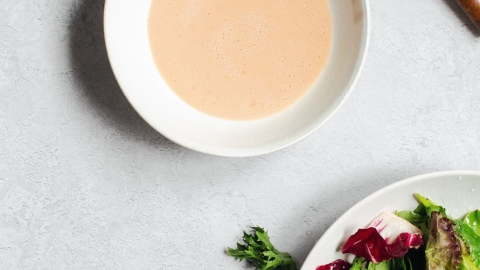Leftover Libations
Cooking with wine is almost as old as cooking and wine themselves—they go together hand in hand. So, what exactly should we do with the dregs, the splashes or the quarter bottles at the end of the party? Wine is far from inexpensive—the last thing anyone wants is to see a drop wasted after a festive gathering.
Leftover wine has a delightful flavour; it’s not as acidic as vinegar but it’s too tangy to drink. It’s also sweeter and more complex than any store-bought wine vinegar. In the kitchen, the uses are truly delicious. My Italian Nana insisted that adding leftover red wine to her pasta sauce was the secret. Every time she made meatballs slowly stewed in tomato juice, a healthy splash of wine left from last night’s dinner, or the end of a bottle that happened to be in the fridge too long, landed in the sauce pot.
Wine is also delightful in stews and braises, or anytime a roast is bound for the oven. Add a splash in the bottom of the pan and the wine will infuse into the meat and any vegetables nestled around the pan—and, of course, make the tastiest gravy to serve alongside the dish. When caramelizing onions or cooking ground meat for tacos, chili or Sloppy Joes, a glug of leftover wine will never disappoint; it’s the perfect addition to deglaze the pan, scraping up all the tasty, caramelised pieces and infusing your dish with bright, sweet acidity.
Leftover red wine that is only a day or two old is especially perfect for mulled wine or glogg. Add a little sugar, some brandy or spiced rum, orange slices, cloves and crushed whole nutmeg along with a cinnamon stick and pour it all into the slow cooker. Let it simmer for a few hours and you will have created a deliciously warming aperitif, and filled your home with the scent of the holidays.
Whenever I have a splash of white or sparkling wine leftover, I immediately head to the fridge to see what odd clumps of cheese I have leftover as well. Fromage Fort, a recipe shared in Edible Vancouver Island’s Spring 2021 issue (page 10), is a simple, delicious dip that uses up so many leftovers, wine included. Almost any combination of cheese works, and it’s a lovely addition to a veggie tray or just slathered on toast and topped with tomatoes drizzled with balsamic.
There truly are so many ways to use up those last dregs of wine, but my absolute favourite way is to make my own wine vinegar. It’s the perfect addition to salad dressings, marinades and sauces, and also makes a great gift. When you find ends of bottles, start decanting them together, cork and store in a cupboard. But the key to making your own wine vinegar is to have the mother introduced, which is a natural bacteria that eats the alcohol and turns it into acid. Any good, unpasteurized vinegar will have some mother in it. I love to find a bottle at a craft sale or holiday market and use that as the starter for this year’s batch of vinegar.
When you’re ready to start the batch, pour the mother and all the collected bottles of wine into a crock. Then cover the top with cheese cloth and let it sit for at least 6 months in a dark cool pantry. Come early summer when the garden is starting to produce and salad season begins, the vinegar is ready to enjoy! Pour the contents of the crock into a pitcher and then into bottles. Seal or cork the bottles and store for the next time you need a splash.





